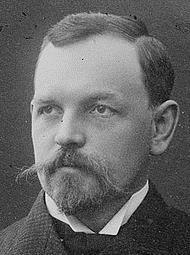The August Röhss chair
In 1901 August Röhss, a Swedish businessman donated 350 tSEK (which corresponds to about 21 million SEK in today’s monetary value) to the Gothenburg University College to establish four chair professor positions in geography, economics, sociology and political science.
Deliang Chen 2007-
Sven Lindqvist was succeeded by Deliang Chen (born 1961 in Jiangsu, Taizhou City, China) in 2007 when for the first time the direction of the chair position was stated as “Physical Geography directed towards Geoinformatics”. Chen is a meteorologist and received his doctorate in 1992 at the Johannes Gutenberg-University in Mainz under the guidance of atmospheric chemist and Nobel laureate Prof. P. J. Crutzen. Title of his thesis is 'Development of a Two-Dimensional Model of Global Climate-Transport' and his thesis work deals with global climate modeling with a focus on the effect of climate change on atmospheric transport between the northern and southern hemispheres. He is known for his work on regional climate change and variability in Scandinavia and Asia, focusing on the role of large-scale atmospheric circulations as well as on the impact of extreme events on for example water resources, air quality and ecosystem. During 2009 and 2012 Chen acted as the executive director of the International Council for Science (ICSU) in Paris, France. He has a long publication record and one of his many scientific contributions has been lead author for the UN’s Intergovernmental Panel on Climate Change (IPCC) Working Group I (AR5).
/Sofia Thorsson, Mats Olvmo and Björn Holmer
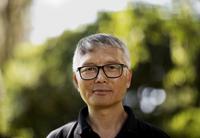
Sven Lindqvist 1984-2007
Sten Rudberg was succeeded by Sven Lindqvist (born 1919 in Västervik, Småland) in 1984. Lindqvist is a geographer with emphasis on physical geography and he received his doctorate in 1970 at Lund University. The title of his thesis is ‘Bebyggelsklimatiska studier’ and in the thesis he analyses the temporal and spatial thermal pattern of built-up areas in different weather conditions. Lindqvist was a pioneer when it came to use infrared thermography to study the urban heat island phenomena. In the late 60s he also initiated studies of road climatology. Later, as the director of a climate consulting firm (Bergab), he developed the Swedish Road Administration Weather Information Systems (VVIS) in collaboration with the National Swedish Road Administration.
When he became a professor, he initiated and developed two research groups in urban climate and road climate, which are still active today. Besides studies of the local climate of urban areas and roads, he conducted studies of the thermal regime of a palsa and on land degradation in the Sahel region of Africa. Lindqvist is known for his organizational work and held the position of Head of Department 1984-1993, Dean of the Faculty of Science 1993-1999 and Pro-Vice-Chancellor 1999-2003. On Lindquist’s initiative the Department of physical geography moved to its current location in 1990, and in 1995, the other earth science departments followed. In this way all departments gathered under one roof and the Department of Earth Sciences was formed. Lindqvist retired in 2007.
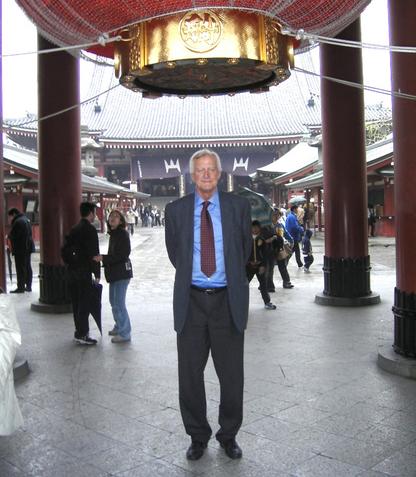
Sten Rudberg 1958-1984
In 1958 Sten Rudberg (born 1917 in Uppsala) was appointed to August Röhss professorship in geography. Rudberg was a geographer and like many of his precursors he received his doctorate at Uppsala University (1954). The title of his thesis is ‘Västerbottens berggrundsmorfologi. Ett försök till rekonstruktion av preglaciala erosionsgenerationer i Sverige’. In his thesis, Rudberg mapped the bedrock geomorphology in Västerbotten County, northern Sweden and showed the presence of peneplain steps from the Norwegian coast to the Botnian coast. In his thesis, he also summarized twentieth century ideas about landscape development and later on, as a professor in geography, he produced geomorphological maps for the Atlas of Sweden. He also drafted geomorphological maps for the Nordic countries. In addition, he studied the colonization of the inner part of northern Sweden (1958). Rudberg was one of Filip Hjulströms students. Hjulström, who is known for launching process-oriented research, came together with many of his students to have had a strong influence on Swedish research in physical geography. This new approach along with a similar development in human geography led to the establishment of two professorships, one with emphasis on physical geography and one with emphasis on human geography. Rudberg’s contribution to process geomorphology was mainly in periglacial environment. Rudberg retired in 1984, but continued his research after retirement returning to his “old” research field and in a series of papers summarized his ideas about landform development in Scandinavia.
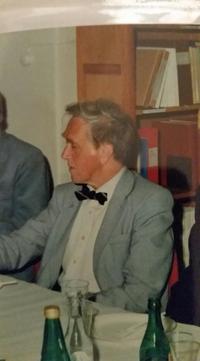
1957
In 1957 the vacant position after Bergsten was temporarily held by Nils Björsjö, a lecturer at the School of Education in Gothenburg.
Karl-Erik Bergsten 1952-1957
Fredrik Enqvist was succeeded by Karl-Erik Bergsten (born 1919 in Risinge, Östergötland) in 1952. Bergsten was a geographer and received his doctorate in 1943 at Lund University. The title of his thesis is ‘Ishavsfält kring norra Vättern’ and is a description and interpretation of glaciofluvial landforms within the Younger Dryas marginal zone in two areas north of the Swedish Lake Vättern. As a contribution in human geography, he studied where people living in cities in southern Sweden were born. He also wrote a textbook in physical geography. Bergsten held the position until 1957 when he moved to Lund University.
In 1957 the vacant position after Bergsten was temporarily held by Nils Björsjö, a lecturer at the School of Education in Gothenburg.
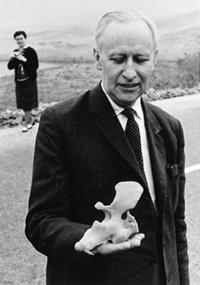
Fredrik Enqvist 1938-1951
In 1938, Fredrik Enqvist (born 1885 in Stockholm) was appointed to the August Röhss professorship in geography. Enqvist was a geographer and he received his doctorate in 1917 at Uppsala University. The title of his thesis is ‘Der Einfluss des Windes auf die Verteilung der Gletscher’ and is a description of the influence of wind on glacier distribution in northeastern Sweden. Enqvist was a glaciologist, but he also studied changes in vegetation and the influence of climate on crop variation. Enqvist retired in 1951.
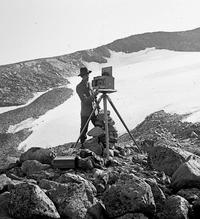
1934-1938
Between 1934 and 1938 the August Röhss professorship in Geography was temporarily held by Ivar Högbom (1933-34) (who later became Vice Chancellor at School of Economics in Stockholm), Olof Jonasson (1935-37) (who later became professor in economic geography at the School of Economics in Gothenburg) and Erik Granlund (1937-38) (who died of a heart attack at his desk).
Sten de Geer 1929-1933
Otto Nordenskjöld was succeeded by Sten de Geer (born 1886 in Stockholm) in 1929. His father was Gerard de Geer, famous for his clay-varve chronology of the inland ice recession in Sweden. Sten de Geer was a geographer and received his doctorate in 1911 at Uppsala University. The title of his thesis is ‘Klarälvens serpentinlopp och flodplan’ and is a description of point-bar migration in the river Klarälven. He also made the first description of landforms in southern Sweden (1913) in northern Sweden (1926) and mapped the population distribution in Sweden (1919), which, according to himself, was his most important work. de Geer held the professorship until 1933 when he passed away from blood poisoning.
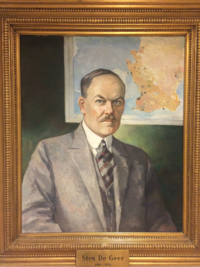
Otto Nordenskjöld 1905-1928
In 1905 Otto Nordenskjöld (born 1869 in Sjögelö outside Mariannelund, Småland) was appointed as the first professor in geography. Otto Nordenskjöld was a nephew of Adolf Erik Nordenskiöld, who led the famous Vega expedition in 1878-1880 that found and sailed through the entire Northeast Passage sea route. Otto Nordenskjöld was a geologist, geographer and explorer. He received his doctorate in 1894 at Uppsala University. The title of his thesis is ‘Über archäische Ergussgesteine aus Småland’ (About Archean effusive rocks from Småland).
Like his uncle A. E. Nordenskiöld, Otto Nordenskjöld led several polar expeditions to the northern hemisphere (Alaska in 1889 and Greenland in 1909), but also to the southern hemisphere (Patagonia and Tierra del Fuego in 1885-1897 and Antarctic in 1901-1903). During his expedition to Antarctica, his team was split, and one group had to overwinter in difficult circumstances. After several hardships, the team was reunited, and upon their return Nordenskjöld received much fame both for surviving the difficult conditions of a harsh Antarctic winter without adequate supplies but also for his findings of animal and plant fossils that threw new light on Antarctica's developmental history and contributed to the theory of continental drift. Nordenskjöld initiated the School of Economics in Gothenburg, which was founded in 1923, and he became its first Vice Chancellor. He also established the Geographical Society of Gothenburg (Geografiska föreningen i Göteborg) in 1908, which is still active today. Nordenskjöld held the professorship in geography until 1928 when he was killed by a bus near his home in Änggården.
